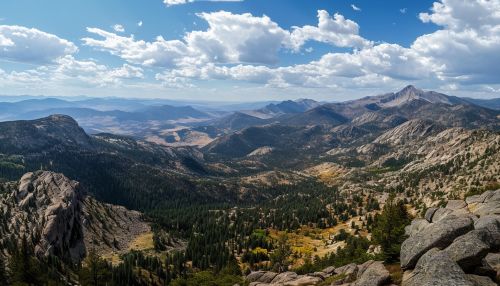Geology of the Rocky Mountains
Introduction
The geology of the Rocky Mountains is a fascinating and complex subject, encompassing billions of years of Earth's history. The Rocky Mountains, a major mountain range in western North America, have been shaped by a series of geological events, including the formation and erosion of mountain ranges, the deposition of sediment, and the impact of glaciation. This article delves into the intricate geological history of the Rockies, exploring the processes that have shaped these majestic mountains.


Geological History
Precambrian Era
The oldest rocks in the Rocky Mountains date back to the Precambrian era, over a billion years ago. These rocks, primarily gneiss and schist, were formed from the intense heat and pressure deep within the Earth's crust. The Precambrian era also saw the formation of the Wyoming Craton, a stable section of the continental crust that has remained largely unchanged for over a billion years.
Paleozoic Era
During the Paleozoic era, the area that is now the Rocky Mountains was covered by a shallow sea. Sediments deposited in this sea formed layers of sandstone, limestone, and shale. These sedimentary rocks are rich in fossils, providing a record of the marine life that once inhabited this region.
Mesozoic Era
The Mesozoic era was a time of significant tectonic activity in the Rocky Mountains region. The Sevier Orogeny, a major mountain-building event, began in the late Jurassic period and continued into the Cretaceous period. This event resulted in the uplift of the western portion of North America and the formation of the ancestral Rocky Mountains.
Cenozoic Era
The Cenozoic era brought further changes to the Rocky Mountains. The Laramide Orogeny, another significant mountain-building event, occurred during the early part of this era, resulting in the uplift of the modern Rocky Mountains. This era also saw the formation of the Colorado Plateau and the Great Basin, as well as significant volcanic activity.
Geological Features
Mountain Ranges
The Rocky Mountains are composed of over 100 separate mountain ranges, each with its own unique geological history. These ranges include the Front Range, the Sawatch Range, and the San Juan Mountains, among others.
Plate Tectonics
The Rocky Mountains are a prime example of the effects of plate tectonics, the theory that the Earth's crust is made up of large plates that move and interact with each other. The uplift of the Rocky Mountains is primarily due to the subduction of the Pacific Plate beneath the North American Plate.
Glaciation
The Rocky Mountains have been significantly shaped by glaciation, particularly during the Pleistocene epoch, also known as the Ice Age. Glaciers carved out valleys, created lakes, and left behind a variety of glacial landforms, including moraines, cirques, and aretes.
Geological Resources
The Rocky Mountains are rich in geological resources, including minerals, fossil fuels, and groundwater. The region is known for its deposits of gold, silver, copper, and lead, as well as coal, oil, and natural gas.
